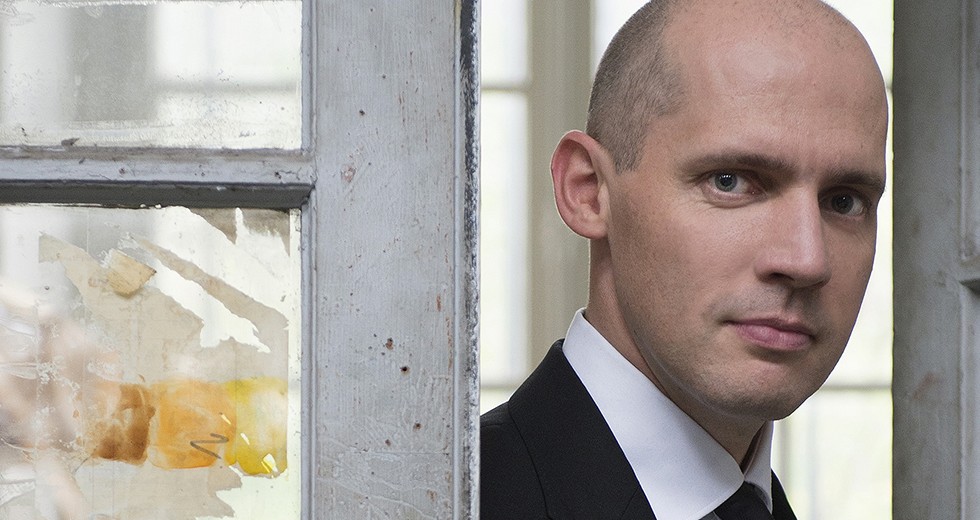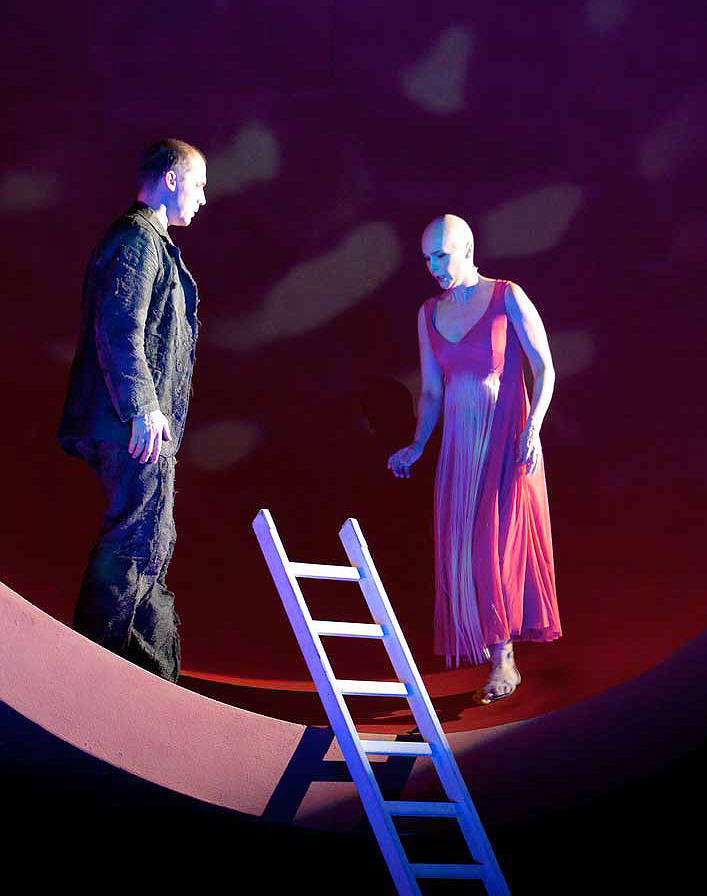
The Chicago Symphony Orchestra’s recent spring festivals have explored the unusual. In 2013, the focus was Rivers: Nature, Power, Culture, and repertoire ranged from Smetana’s beloved The Moldau, a 19th-century evocation of his native Bohemia’s great rivers, to Mississippi Suite, a 1934 work by Florence Price, an African-American composer who spent much of her life in Chicago. Last year, the theme was Truth to Power, with music of Shostakovich, Prokofiev and Britten — composers who questioned the orthodoxies of their times — front and center.
This spring’s festival, Reveries and Passions, running through May 24, might seem equally exotic to some. During its 124 years, the CSO has become renowned for its way with the masterpieces of 19th century Germany and Austria, such as Beethoven, Brahms, Mahler and Bruckner. Current Music Director Riccardo Muti has added an emphasis on operas by Verdi, and this season, works by the Russian masters Tchaikovsky and Scriabin. Though Jean Martinon, a distinguished French conductor and composer, was CSO music director in the mid-1960s, the orchestra’s profile has remained firmly linked to Europe east of Paris.
Which is what makes this spring’s festival of French music, with the CSO led by guest conductor Esa-Pekka Salonen, so exciting. As one of the world’s great orchestras, the CSO is eminently versatile. Beginning in the mid-1990s, Pierre Boulez, the CSO’s conductor emeritus and an acclaimed composer as well as conductor, worked closely with the orchestra, and their performances of works by Ravel and Debussy were both translucent and deeply thoughtful. The CSO’s immersion this spring in French repertoire, including its first performance of Debussy’s only completed opera, Pelléas et Mélisande; works by Ravel; Messiaen’s expansive Turangalîla-symphonie, and a full lineup of piano recitals, chamber music and jazz works, is a rare excursion into unfamiliar territory.

Magdalena Kožená and Stéphane Degout in Debussy’s Pelléas et Mélisande at the Metropolitan Opera in 2010. | Photo by Ken Howard
Pelléas et Mélisande (with performances May 14, 16 and 19) doubtless will be a high point of Reveries and Passions. French baritone Stéphane Degout sings Pelléas, and mezzo-soprano Jenny Carlstedt makes her CSO debut as Mélisande.
Regarded as the Pelléas of his generation, Degout is becoming something of a regular in Chicago. He made his local debut in December 2011 as a charming Papageno in Mozart’s The Magic Flute at Lyric Opera of Chicago. A month later, CSO audiences heard him as a commanding soloist in performances of Orff’s Carmina Burana, conducted by Muti. Last summer, Degout made his Ravinia Festival debut with a solo vocal recital.
“Pelléas is maybe among the top three roles for me,” said Degout, who also will appear in Ravel’s opera L’enfant et les sortilèges (The Child and Magic Spells) as part of the CSO festival May 7-9 and 15. “I first sang it in 2008. I was a little bit shy, I was not sure with the music, the vocal extremities. But with more productions, I became more and more comfortable with the part. Not only technically, but also with the atmosphere of the piece and also with the text, which has its own atmosphere.”
Debussy’s opera, which finally reached the stage in 1902 after many years of labor, is famously elusive. Mélisande, a young girl found in a forest, is a mysterious figure, even to the men vying for her affections. Based on a Symbolist play by Maurice Maeterlinck, the opera unfolds like a dream full of unanswered questions, driven by some of Debussy’s most evocative music.
“When I first picked up the music to study, I was not convinced at all. ‘Nothing happens. It’s not opera,’ ” he recalled with a laugh. “But the more I worked with this music, I discovered more and more details. I still [do]. It’s endless.”
Degout has sung the role of Pelléas more than 40 times in cities including Paris, Brussels, Vienna, New York and London. Concert versions like the CSO’s put greater focus on the opera’s text. “Debussy wrote only two operas [Rodrigue et Chimene remained unfinished] and a lot of songs,” he said. “So when I work on this Pelléas, I’m working as if I were preparing a recital of French songs — not at all from the theatrical or the dramatic point of view. It works perfectly for me, for the way I like to work. Debussy was always connected to the text. He wrote that he wanted to respect the text.”
Actually, Degout has been studying the art of song since his student days at the music conservatory in Lyon, France. Though his teachers then regarded his voice as too small for opera, his subsequent international opera career has proved them singularly wrong. “I was told, ‘You don’t have a voice for opera, so we’ll have to work on songs,’ ” he said without rancor.
Unexpectedly, he fell in love with song repertoire. “I discovered how much more rich this repertoire is,” Degout said. “It’s all connected to the text, to the emotions without anything that can hide or transform them like [staging] in opera.”
The opera needed a little transformation, however, to work in a concert setting like Symphony Center, according to Gerard McBurney, the CSO’s artistic programming adviser and the creative director of the orchestra’s Beyond the Score series. Salonen suggested that small bits of spoken text could smooth transitions between the opera’s five acts, and McBurney then assembled the text, which will be read by actress Dianne Wiest.
“Esa-Pekka was very, very concerned about a concert performance of an opera famous for its fragility and its mystical emergence out of silence and disappearance back into silence,” McBurney said. “It’s hard in concert performance to force people to listen from the very first nanosecond of the music. They’re turning off their phones. They’re getting settled.”
Unlike in an opera house, many concert halls don’t dim their lights to signal that the music is about to begin. But having an actress start her lines could do the trick. Not only would her voice help people quiet down at the start and after the evening’s two intermissions, it also could head off distracting applause between acts that could destroy the dream-like atmosphere.
“It’s absolutely true that if you have a human voice speaking, it has a curious way of drawing people into that world, so that people are ready to listen,” McBurney said. “It’s a very, very clever dramatic device. Esa-Pekka was very passionate; he was very strong about it.”
Salonen discovered that conductors in earlier eras had used spoken text with Pelléas, said McBurney. The question was how to frame it. Salonen suggested that the text reflect the memories of an old lady, the child born to Mélisande in the opera’s final act. McBurney’s text is a collage of excerpts from Maeterlinck’s play and an essay Maeterlinck wrote about the play itself. About 40 words each, the texts are “tiny, like little collage poems,” McBurney said. “They’re not full-scale narrations in any way whatsoever.”
For that, CSO audiences will have to wait a few weeks after Reveries and Passions, when McBurney will explore the world of Ravel in a new Beyond the Score production June 5 and 7. The focus will be Ravel’s home, a short drive outside Paris, which he bought in 1921, and where he composed works including L’enfant and Bolero.
“It [Ravel’s home] looks like a little pavilion,” McBurney said. “It’s tiny. Everything is so whimsical. It’s like a child’s house. It’s very easy to make the connection between the house and Ravel’s music. It’s very clear that the house in L’enfant et les sortilèges is based on the house he actually lived in.”
Wynne Delacoma, classical music for the Chicago Sun-Times from 1991 to 2006, is a Chicago-based writer and lecturer.
